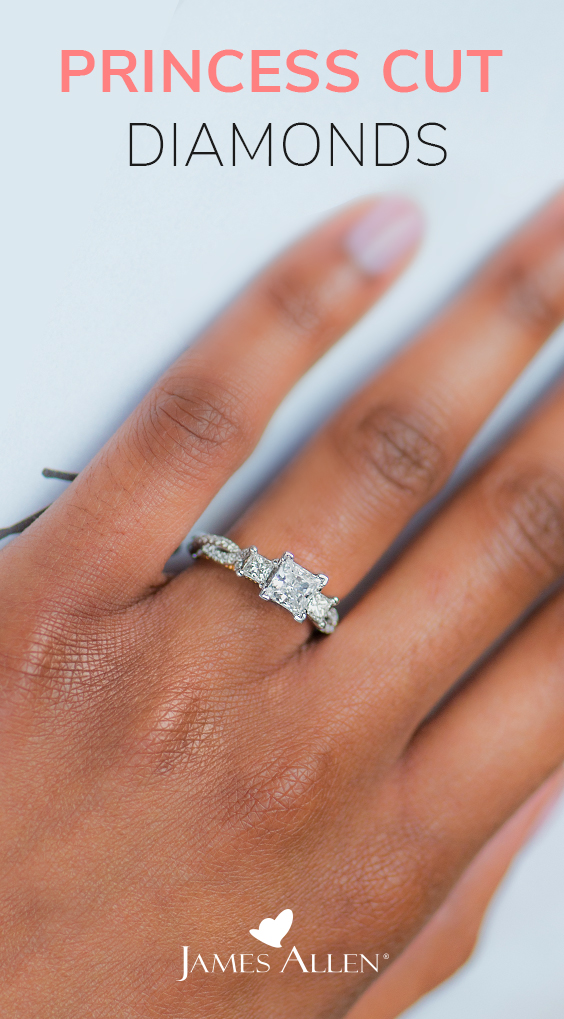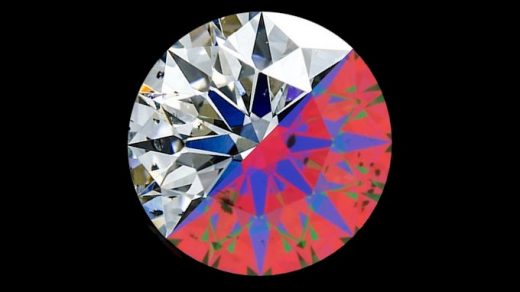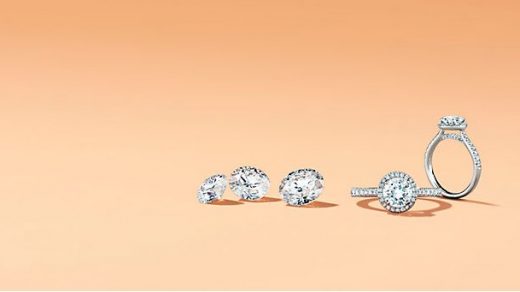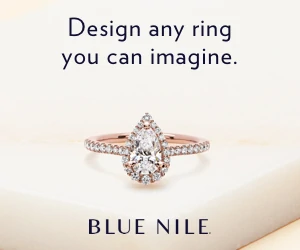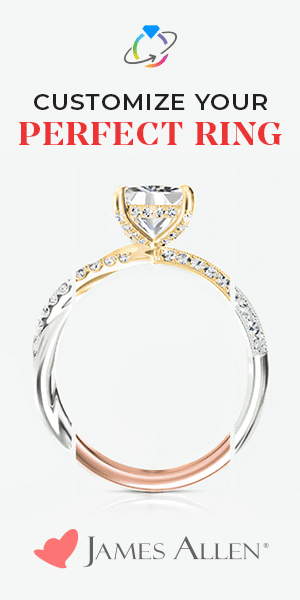Dear DiamondBuyingAdvice,
How do I choose a high performing princess cut diamond? Can you help with helping me decide on a stone which would be the good buy as far as fire and brilliance? What would an ideal princess cut diamond look like? Any advice is appreciated.
Kieren
Ideal Proportions For Princess Cut Diamonds
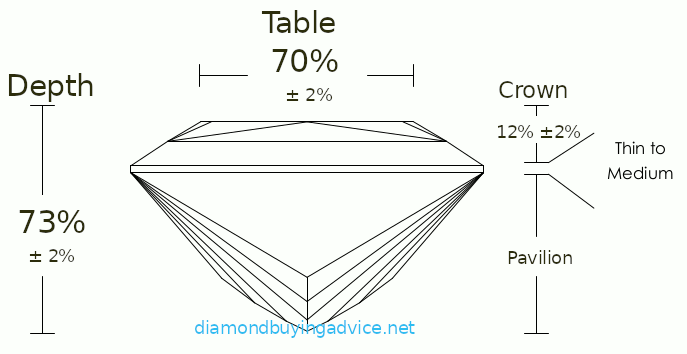
Here are a few guidelines which may help you find a high performance diamond even though the diamond may not have been issued an ideal cut grade.
In this article I will be referencing the AGS cut grade scale. The scale runs from 0 to 10 with 0 being ideal.
Crown
The AGS grading system indicates that full crowns are preferable to small ones. A princess will usually not receive a 0 grade if the crown is below 12%, though it can happen. One or two percentage points either way doesn’t mean the diamond is necessarily going to perform poorly. However a small crown usually means a reduction in the amount of fire the stone produces. So an acceptable range for crown percentage is 10% to 14%, with 12% being preferred.
Table
Princess cut diamonds that have received an AGS ideal 0 cut grade usually have tables around 70%. They may be as small as 68% or as large as 72%. Generally you will find they have a table closer to 68% or 69%. It is not common for diamonds with table sizes outside the 68% to 72% range to be given an ideal cut grade. While it is possible to achieve AGS Ideal with a table size greater than 69%, smaller tables do make an ideal cut grade more likely.
The table percentage should be less than (or equal to) the diamond’s depth percentage. Diamonds with table ratios larger than the depth percentage do not perform well.
Depth
The majority of princess cut diamonds which have been given an ideal cut grade happen to have a depth percentage between 74% and 77%. This does not mean this is the only acceptable range. It may still be possible to achieve ideal 0 by AGS’ standards with a depth percentage below 74%, however other factors, such as table size and crown size will play a role and there may be less complementary combinations. All else being equal the deeper the cut the smaller the face up diamond will appear. So for this reason I recommend looking for a depth percentage between 71% and 75%.
Length to Width Ratio
For all this to work the stone should be square, so an elongated princess cut, that is with a length to width ratio greater than 1.00:1.05 throw all the calculations off. Oblong princess cuts are less likely to achieve an AGS ideal 0.
Crown Height Examples
The table size is something you will find on the diamond grading reports for princess cut diamonds issued by any respectable grading lab. The crown height is not always indicated. For this reason I will include a few examples so you can see the difference, and maybe make an educated guess once you have imaging of the diamond.
The crown height is calculated in relationship to the diamond’s height.
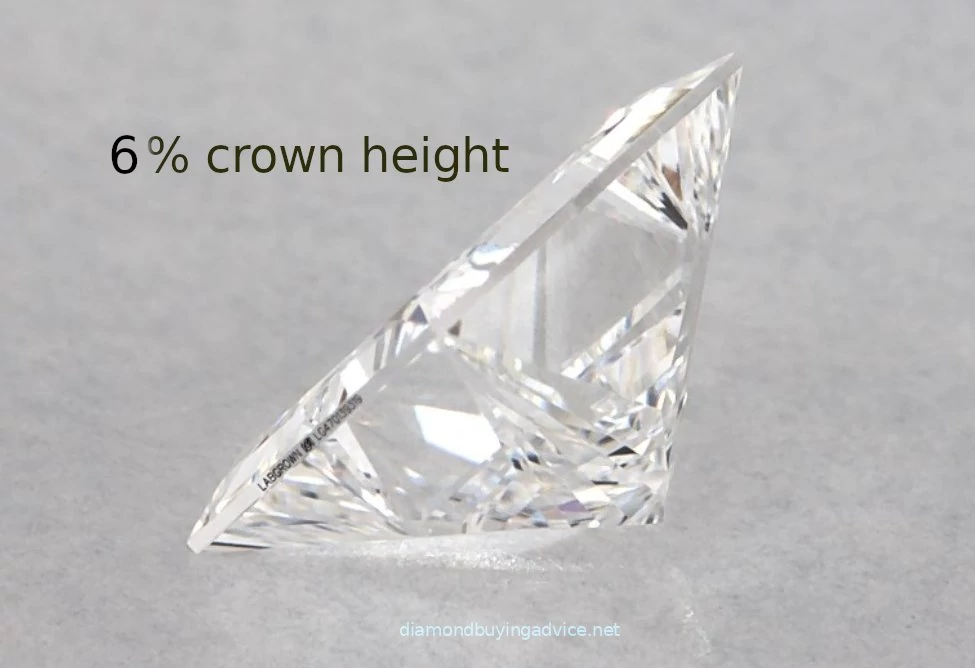
𐄂 This diamond’s crown is less than ideal. As you can see it is barely double the thickness of the girdle.
View 360° image of the above diamond here
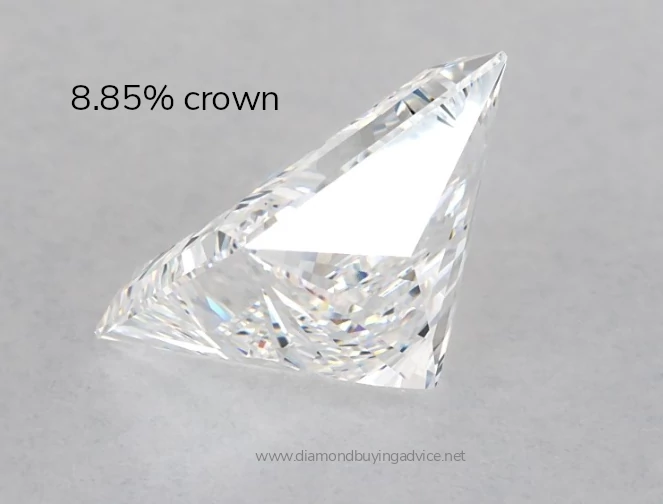
𐄂 This diamond’s crown is just below ideal.
View 360° image of the above diamond here
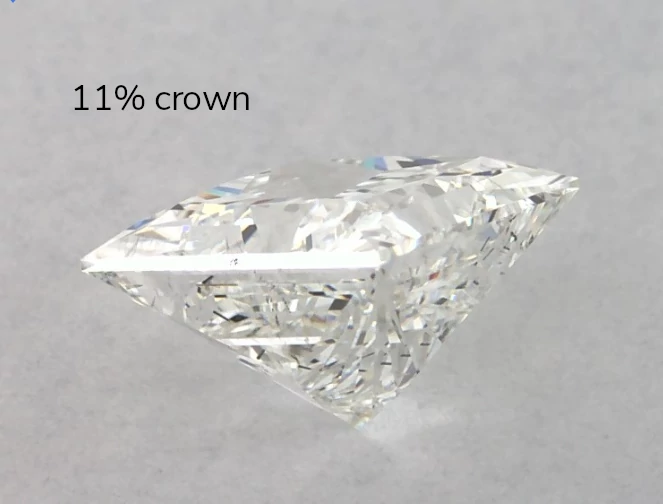
🗸 This diamond has a crown height of 11% which is within the ideal range.
Not all stones will be shown from a direct side angle. The one above will give you an idea what an ideal crown looks like without the benefit of a perfect side view.
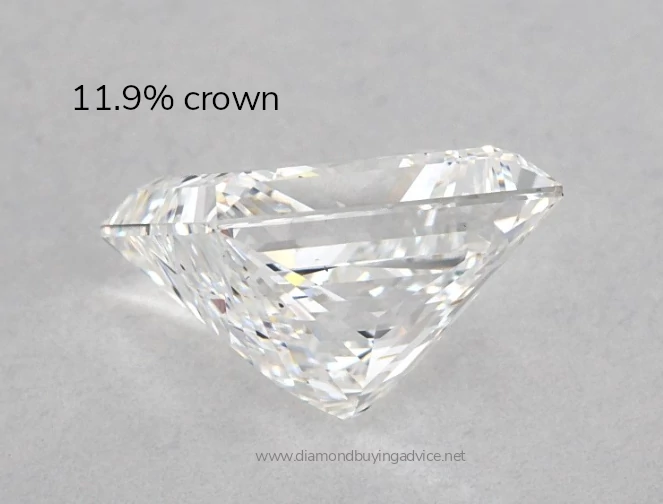
🗸 This diamond has a crown height of 11.9% which is within the ideal range.
This one has truly excellent light performance. View 360° image of the above diamond here
As the crown height may not be recorded on the diamond grading certificates issued by some labs the above examples can serve as a reference.
Performance Before Carat
The AGS Lab is arguably the global authority when it comes to diamond cut quality analysis. Their comprehensive light performance grading system is not only scientifically rigorous, it is consistent, repeatable and adaptable to other diamond shapes apart from round brilliants. The groundbreaking work AGS did on round brilliant cut diamonds was an important development in the understanding of diamond cut. This was the move from 2 dimensional, proportion based systems to one based upon ray tracing in 3 dimensions. This allows then to calculate the effects of every facet on a diamond’s performance. In the process, the research served to create a new segment of the diamond market interested in top cut quality. This led their sister organization, GIA, to introduce their cut grade system for rounds which served to further elevate cut quality as the most important of the 4 C’s. The work AGS Labs has done in the evaluation of the princess cut has equally led the way to greater understanding of the beauty elements of this very popular shape. And it has clearly influenced the way many manufacturers cut their princess diamonds. This shift away from weight retention and toward beauty is being taken up by a number of manufacturers worldwide. Today we see a greater number of high performing princess cuts than ten or even five years ago.
What If The Diamond Isn’t Graded by AGS?
An examination of ideal princess cut diamonds which have all been issued an AGS cut grade of 0 gives us the information shown in the graphic at the top of this article. An examination of the common values found on those reports for princess cut diamonds which have received an ideal cut grade can give us an idea what to look for even when a diamond has not been sent to AGS for grading.
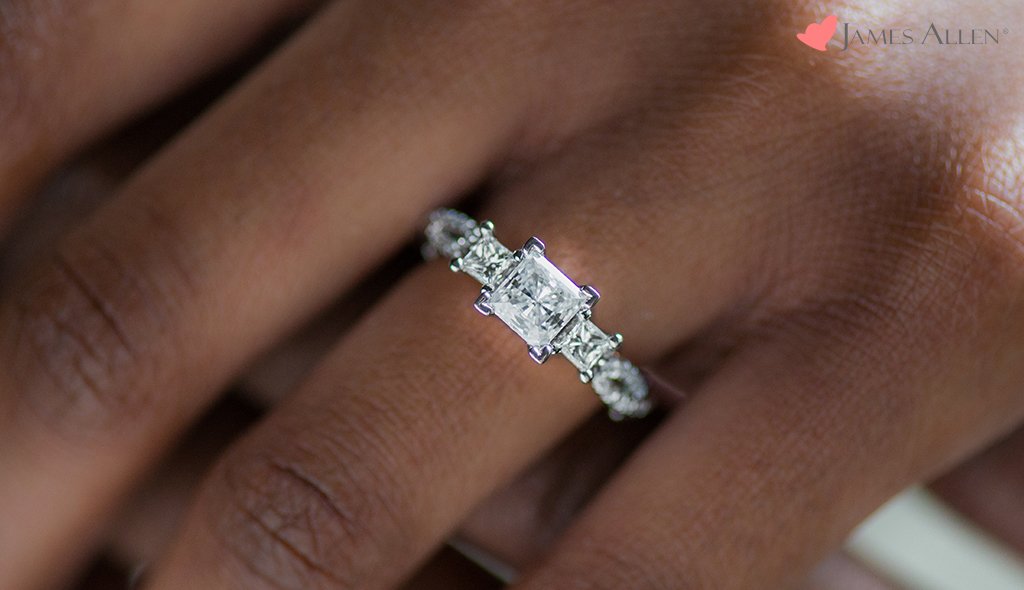
Send in your question
If you are looking to buy any type of diamond jewelry online you are welcome to send in any questions you may have.
As an affiliate of the some of the world’s finest jewelers I am motivated to find the right purchase that is perfect just for you. Every person has specific needs and every jeweler has specific areas in which they excel.

Thomas J Stevens GIA DG CSG

